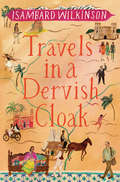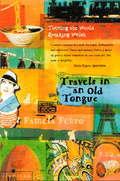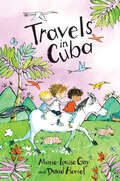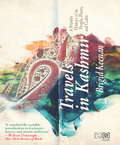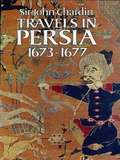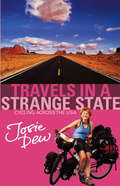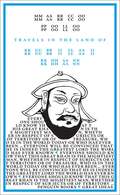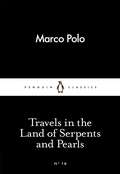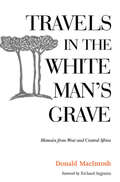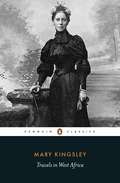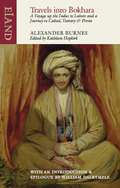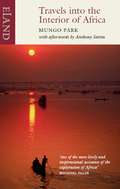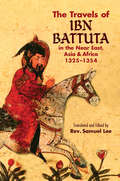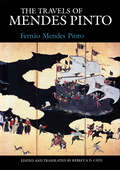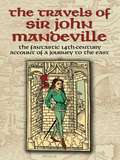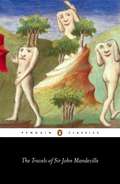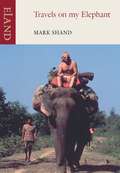- Table View
- List View
Travels in a Dervish Cloak
by Isambard WilkinsonSpellbound by his grandmother’s Anglo-Indian heritage and the exuberant annual visits of her friend the Begum, Isambard Wilkinson became enthralled by Pakistan as an intrepid teenager, eventually working there as a foreign correspondent during the War on Terror. Seeking the land behind the headlines, Bard sets out to discover the essence of a country convulsed by Islamist violence. What of the old, mystical Pakistan has survived and what has been destroyed? We meet charismatic tribal chieftains making their last stand, hereditary saints blessing prostitutes, gangster bosses in violent slums and ecstatic Muslim pilgrims.Navigating a minefield of coups, conspiracies, cock-ups and bombs, Bard is reluctant to judge, his ear alert to the telling phrase, his eye open to Pakistan’s palimpsest of beliefs, languages and imperial legacies. His is a funny, hashish- and whisky-scented travel book from the frontline, full of open-hearted delight and a poignant lust for life. Like a cat with nine lives, Bard travels and parties his way to the remotest corners, never allowing his own fragile health to deter him.
Travels in an Old Tongue: Touring The World Speaking Welsh
by Pamela PetroThe idiosyncratic and witty travelogue of a young Welsh-speaking woman who travels the globe in search of Welsh communities.
Travels in Cuba (Travels with My Family)
by Marie-Louise Gay David HomelEven for an experienced traveler like Charlie, Cuba is a place unlike any he has visited before — an island full of surprises, secrets and puzzling contradictions. When Charlie’s artist mother is invited to visit a school in Cuba, the whole family goes along on the trip. But the island they discover is a far cry from the all-inclusive resorts that Charlie has heard his friends talk about. Charlie has never visited a country as strange and puzzling as Cuba — a country where he often feels like a time traveler. Where Havana’s grand Hotel Nacional sits next to buildings that seem to be crumbling before his very eyes. Where the streets are filled with empty storefronts and packs of wild dogs, but where flowers and sherbet-colored houses may lie around the next corner, and music is everywhere. Where there are many different kinds of walls — from Havana’s famous sea wall to the invisible ones that seem aimed at keeping tourists and locals apart. Then the family heads “off the beaten track,” traveling by hot, dusty bus to Viñales, where Charlie makes friends with Lázaro, who often flies from Miami to visit his Cuban relatives. The boys ride a horse bareback, find a secret cache of rifles inside a little green mountain and go swimming with small albino fish in an underground cave. A rent-a-wreck takes the family into the countryside, where they find an abandoned hotel inhabited by goats, and a modern resort filled with tourists. And as he goes from one strange and marvelous escapade to another, Charlie finds that his expectations about a place and its people are overturned again and again. Key Text Features illustrations Correlates to the Common Core State Standards in English Language Arts: CCSS.ELA-LITERACY.RL.5.6 Describe how a narrator's or speaker's point of view influences how events are described.
Travels in Kashmir: A Popular History Of Its People, Places And Crafts
by Brigid Keenan‘A beautifully written, meticulously researched journey through time in Kashmir’ – Basharat Peer The very name Kashmir conjures up magical images, from the real garden paradise of Shalimar to Thomas Moore’s fantastic descriptions in “Lalla Rookh”. Recounting the story of this colourful and fascinating region as it appears in travel writing, literature, and historical works from ancient times to the present day, Travels in Kashmir offers a lively and comprehensive guide to a land little understood in the West. Beginning with an informal history of Kashmir – from the legends of the twelfth-century Kalhana to the accounts of British colonial rulers – the book brings together a wide variety of engaging travellers’ tales, reports, and descriptions that vividly illustrate the changing perceptions of the area – both Indian and European – throughout the years. Of particular interest is a section on the arts, crafts, and craftspeople of Kashmir, which focuses specifically on the shawl-weaving, carpet-making, and papier mâché works that have gained international renown. Throughout, Keenan proves a sharp as well as sympathetic observer with an eye for the amusing and the poignant, and the entertaining way she unfolds the story of Kashmir’s people, places, and crafts makes this a book that will be enjoyed by tourists, readers of travel writing, and anyone interested in one of the most unusual and beautiful places in the world.'
Travels in Persia, 1673-1677
by John ChardinFirst inexpensive edition of great travel classic offers detailed, sharply observed portrait of 17th-century Persia. Vivid record of life at court of Shah: lavish banquets and entertainments, diplomatic negotiations, intrigues and cruelty, more. Also, soil and climate, flora and fauna, manners and customs, trade and manufacture, and many other aspects. 9 illustrations.
Travels In A Strange State: Cycling Across the USA
by Josie DewBy most people's standards, Josie Dew is hugely adventurous. By American standards, she is completely insane. For Americans drive everywhere: through cinemas, restaurants, banks, even trees. But driving past Josie as she pedalled across America was a new and alarming experience.On her eight-month journey Josie experienced it all; race riots in Los Angeles, impossible heat in Death Valley, Sexual Tantric Seminars in Hawaii. From Utah to the Great Lakes, via improbable places like Zzyzx and Squaw Tit, her two-wheeled odyssey brought her into contact with all the wonders and worries of this larger-than-life country.Highly entertaining, richly informative, TRAVELS IN A STRANGE STATE is a personal memoir of an improbable journey, revealing the United States as it is rarely seen - from the seat of a bicycle.
Travels in the Interior of America
by John BradburyInteresting notes about the country in early times.
Travels in the Land of Kubilai Khan (Penguin Great Ideas Ser. #Vol. 27)
by Marco PoloThroughout history, some books have changed the world. They have transformed the way we see ourselves - and each other. They have inspired debate, dissent, war and revolution. They have enlightened, outraged, provoked and comforted. They have enriched lives - and destroyed them. Now Penguin brings you the works of the great thinkers, pioneers, radicals and visionaries whose ideas shook civilization and helped make us who we are. A profound influence on medieval Europe's view of the wider world, this thirteenth-century account of a Venetian merchant's amazing experiences in the court of the great Mongol leader, Kubilai Khan, remains one of the most fascinating tales of exploration ever written.
Travels in the Land of Serpents and Pearls (Penguin Little Black Classics)
by Marco Polo'You will hear it for yourselves, and it will surely fill you with wonder...'In this selection from Marco Polo's famous travel book, the intrepid Venetian describes the customs of India, recounts the story of the king who died eighty-four times and explains how to retrieve diamonds from snake-infested caves...Introducing Little Black Classics: 80 books for Penguin's 80th birthday. Little Black Classics celebrate the huge range and diversity of Penguin Classics, with books from around the world and across many centuries. They take us from a balloon ride over Victorian London to a garden of blossom in Japan, from Tierra del Fuego to 16th-century California and the Russian steppe. Here are stories lyrical and savage; poems epic and intimate; essays satirical and inspirational; and ideas that have shaped the lives of millions.Marco Polo (1254-1324). Polo's Travels are available in Penguin Classics.
Travels in the White Man's Grave: Memoirs from West and Central Africa
by Donald MacIntoshIn the 1950s, the interior of West and Central Africa was still known as 'The White Man's Grave'. Its forests were primeval and inhabited the minds of Westerners as places of foreboding. But to Donald MacIntosh, a 23-year-old Gaelic-speaking Scottish forester, it was a dream come true when he found himself posted to the hot, cloying humidity of those fabled lands. During the next 30 years he was to work and live as a tree surveyor, prospector and forest botanist. He listened to the tales of ancient Africa from the lips of hunters, fishermen, chiefs and witch doctors from a vast diversity of tribes in myriad encampments and also had many encounters with the creatures of the forest, from the magnificent leopard to the homicidal buffalo, and from the indolent but horrendously venomous gaboon viper to the agile, irascible and instantly fatal spitting cobra. His odyssey contains a host of characters with exotic names like 'Old Man Africa', 'Magic Sperm', 'Famous Sixpence' and 'Pisspot', whose stories are all told here. But the Africa that MacIntosh describes is no more. The forests have been decimated, and with them have gone the people and the creatures that lived in them long before the coming of the white man's chain saw. This is a rare, poignant and sometimes hilarious glimpse into a vanished past by one who was part of it.
Travels in West Africa: Congo Fran�ais, Corisco And Cameroons
by Mary KingsleyA remarkable account by a pioneering woman explorer who was described by Rudyard Kipling as 'the bravest woman of all my knowledge'.Until 1893, Mary Kingsley lived the typical life of a single Victorian woman, tending to sick relatives and keeping house for her brother. However, on the death of her parents, she undertook an extraordinary decision: with no prior knowledge of the region, she set out alone to West Africa to pursue her anthropological interests and collect botanical specimens. Her subsequent book, published in 1897, is a testament to understatement and humour - few explorers made less of the hardships and dangers experienced while travelling (including unaccompanied treks through dangerous jungles and encounters with deadly animals). Travels in West Africa would challenge (as well as reinforce) contemporary Victorian prejudices about Africa, and also made invaluable contributions to the fields of botany and anthropology. Above all, however, it has stood the test of time as a gripping, classic travel narrative by a woman whose sense of adventure and fascination with Africa transformed her whole life. This Penguin edition includes a fascinating introduction by Dr Toby Green examining Victorian attitudes to Africa, along with explanatory notes by Lynnette Turner.Mary Kingsley was born in north London in 1862, the daughter of the traveller, writer and physician George Kingsley and his former housekeeper, Mary Bailey. Her education was scant: while her younger brother Charley was sent away to school, she stayed at home. In 1886 the family moved to Cambridge, where Kingsley remained until 1892, caring for her bedridden mother. Following the deaths of her parents, Kingsley embarked on a voyage to West Africa in August 1893, with the object of studying native religion and law and collecting zoological specimens. In December 1894, she undertook a second trip to the region, during which she became the first woman to climb West Africa's highest mountain, Mount Cameroon. On returning home eleven months later, she wrote Travels in West Africa, which was published in 1897 and was followed by West African Studies in 1899. Kingsley made one final trip to Africa, enlisting as a volunteer nurse in South Africa during the Boer War. She had only been there for two months when she developed typhoid fever and died, on 3rd June 1900, before being buried at sea in accordance with her wishes.Lynnette Turner is Associate Dean of the Faculty of Arts and Sciences at Edge Hill University. Toby Green is Lecturer in Lusophone African History and Culture at Kings College London. His book The Rise of the Trans-Atlantic Slave Trade in Western Africa appeared in 2011.
Travels into Bokhara: A Voyage up the Indus to Lahore and a Journey to Cabool, Tartary & Persia
by Alexander BurnesAt the age of only twenty six, Alexander Burnes proved himself to be one of the most effective intelligence agents of his time. Making two dangerous journeys beyond the frontiers of the Indian Empire, he reported back via the East India Company to Downing Street on the geography and politics of the kingdoms that lay to the northwest as far as fabled Bokhara. He travelled simply, disguised as a local, but with his rapier-like mind, an ear for languages and an infectious charm and curiosity, he had a formidable arsenal of talents at his command. In 1835, the publication of Burnes's Travels into Bokhara made him a celebrity in London, where he lectured to packed halls and was even given an audience by the King. This brand new edition brings the heady sense of excitement, risk and zeal bursting from the pages.
Travels into the Interior of Africa
by Mungo ParkMungo Park's account of his journeys into West Africa in 1795 and again in 1805 provided Europeans with their first reliable description of the interior of the continent. Though he failed in the object of his mission -to chart the course of the Niger River -he succeeded in leaving a unique record of everyday life before the exploitation of Africa by Europeans, as valuable today as it was then. His first-hand experiences of tribal justice, gold mining and the slave trade are recorded, as well as his own understated heroism, a story of courage, open-hearted friendship and betrayal.
The Travels of Ibn Battuta: in the Near East, Asia and Africa, 1325-1354
by Ibn BattutaThe Arab equivalent of Marco Polo, Sheikh Ibn Battuta (1304-77) set out as a young man on a pilgrimage to Mecca that ended 27 years and 75,000 miles later.The only medieval traveler known to have visited the lands of every Muslim ruler of his time, Ibn Battuta was born into a family of highly respected religious judges and educated as a theologian. Leaving his native city of Tangier in 1326, he traveled — over the next several years — to East Africa, Byzantium, Iraq, southern Russia, India, Ceylon, and China. His account of the journey, dictated on his return, not only provides vivid accounts of an odyssey that took him to exotic lands, but also describes in great detail Muslim maritime activities in the Middle and Far East, fascinating elements of foreign architecture, and agricultural activities of diverse cultures.A rare and important work covering the geography and history of the medieval Arab world, this primary sourcebook will be welcomed by students and scholars for its inherent historical value.
The Travels of Mendes Pinto
by Fernão Mendes PintoThis text, ostensibly the autobiography of Portugese explorer Fernão Mendes Pinto, came second only to Marco Polo's work in exciting Europe's imagination of the Orient. Chronicling adventures from Ethiopia to Japan, Travels covers twenty years of Mendes Pinto's odyssey as a soldier, a merchant, a diplomat, a slave, a pirate, and a missionary, and continues to overwhelm questions about its source with the sheer enjoyment of its narrative. "[T]here is plenty here for the modern reader. . . . The vivid descriptions of swashbuckling military campaigns and exotic locations make this a great adventure story. . . . Mendes Pinto may have been a sensitive eyewitness, or a great liar, or a brilliant satirist, but he was certainly more than a simple storyteller."—Stuart Schwartz, The New York Times
The Travels of Mendes Pinto
by Fernão Mendes PintoThis text, ostensibly the autobiography of Portugese explorer Fernão Mendes Pinto, came second only to Marco Polo's work in exciting Europe's imagination of the Orient. Chronicling adventures from Ethiopia to Japan, Travels covers twenty years of Mendes Pinto's odyssey as a soldier, a merchant, a diplomat, a slave, a pirate, and a missionary, and continues to overwhelm questions about its source with the sheer enjoyment of its narrative. "[T]here is plenty here for the modern reader. . . . The vivid descriptions of swashbuckling military campaigns and exotic locations make this a great adventure story. . . . Mendes Pinto may have been a sensitive eyewitness, or a great liar, or a brilliant satirist, but he was certainly more than a simple storyteller."—Stuart Schwartz, The New York Times
The Travels of Mendes Pinto
by Fernão Mendes PintoThis text, ostensibly the autobiography of Portugese explorer Fernão Mendes Pinto, came second only to Marco Polo's work in exciting Europe's imagination of the Orient. Chronicling adventures from Ethiopia to Japan, Travels covers twenty years of Mendes Pinto's odyssey as a soldier, a merchant, a diplomat, a slave, a pirate, and a missionary, and continues to overwhelm questions about its source with the sheer enjoyment of its narrative. "[T]here is plenty here for the modern reader. . . . The vivid descriptions of swashbuckling military campaigns and exotic locations make this a great adventure story. . . . Mendes Pinto may have been a sensitive eyewitness, or a great liar, or a brilliant satirist, but he was certainly more than a simple storyteller."—Stuart Schwartz, The New York Times
The Travels of Mendes Pinto
by Fernão Mendes PintoThis text, ostensibly the autobiography of Portugese explorer Fernão Mendes Pinto, came second only to Marco Polo's work in exciting Europe's imagination of the Orient. Chronicling adventures from Ethiopia to Japan, Travels covers twenty years of Mendes Pinto's odyssey as a soldier, a merchant, a diplomat, a slave, a pirate, and a missionary, and continues to overwhelm questions about its source with the sheer enjoyment of its narrative. "[T]here is plenty here for the modern reader. . . . The vivid descriptions of swashbuckling military campaigns and exotic locations make this a great adventure story. . . . Mendes Pinto may have been a sensitive eyewitness, or a great liar, or a brilliant satirist, but he was certainly more than a simple storyteller."—Stuart Schwartz, The New York Times
The Travels of Mendes Pinto
by Fernão Mendes PintoThis text, ostensibly the autobiography of Portugese explorer Fernão Mendes Pinto, came second only to Marco Polo's work in exciting Europe's imagination of the Orient. Chronicling adventures from Ethiopia to Japan, Travels covers twenty years of Mendes Pinto's odyssey as a soldier, a merchant, a diplomat, a slave, a pirate, and a missionary, and continues to overwhelm questions about its source with the sheer enjoyment of its narrative. "[T]here is plenty here for the modern reader. . . . The vivid descriptions of swashbuckling military campaigns and exotic locations make this a great adventure story. . . . Mendes Pinto may have been a sensitive eyewitness, or a great liar, or a brilliant satirist, but he was certainly more than a simple storyteller."—Stuart Schwartz, The New York Times
The Travels of Mendes Pinto
by Fernão Mendes PintoThis text, ostensibly the autobiography of Portugese explorer Fernão Mendes Pinto, came second only to Marco Polo's work in exciting Europe's imagination of the Orient. Chronicling adventures from Ethiopia to Japan, Travels covers twenty years of Mendes Pinto's odyssey as a soldier, a merchant, a diplomat, a slave, a pirate, and a missionary, and continues to overwhelm questions about its source with the sheer enjoyment of its narrative. "[T]here is plenty here for the modern reader. . . . The vivid descriptions of swashbuckling military campaigns and exotic locations make this a great adventure story. . . . Mendes Pinto may have been a sensitive eyewitness, or a great liar, or a brilliant satirist, but he was certainly more than a simple storyteller."—Stuart Schwartz, The New York Times
The Travels of Sir John Mandeville: The Fantastic 14th-Century Account of a Journey to the East
by John MandevilleOne of the most influential books of the medieval period, John Mandeville's fourteenth-century work was written, ostensibly, to encourage and instruct pilgrims traveling to the Holy Land. A thorough compendium of medieval lore, the travel book proved to be a great success throughout Europe. (Among his alleged readers were Leonardo da Vinci and Christopher Columbus.) The Travels professes to relate Mandeville's experiences in the Holy Land, Egypt, India, and China--where he served in the Great Khan's army--followed by his journey to "the lands beyond," countries populated by "dog-headed men, cannibals, Amazons, and pygmies." Five centuries after Mandeville recorded his observations in those distant lands, the volume's remarkably exacting accounts of events and geography were found to be probable fabrications.Nevertheless, the book's widespread popularity and influence make it essential to the study of medieval English literature. An engaging mix of fact and fantasy, enhanced with more than 100 rare woodcut illustrations, it has retained its place as one of the greatest and most entertaining works of early English vernacular prose.
The Travels of Sir John Mandeville
by John Mandeville C. MoseleyOstensibly written by an English knight, the Travels purport to relate his experiences in the Holy Land, Egypt, India and China. Mandeville claims to have served in the Great Khan's army, and to have travelled in 'the lands beyond' - countries populated by dog-headed men, cannibals, Amazons and Pygmies. Although Marco Polo's slightly earlier narrative ultimately proved more factually accurate, Mandeville's was widely known, used by Columbus, Leonardo da Vinci and Martin Frobisher, and inspiring writers as diverse as Swift, Defoe and Coleridge. This intriguing blend of fact, exaggeration and absurdity offers both fascinating insight into and subtle criticism of fourteenth-century conceptions of the world.
Travels on my Elephant
by Mark ShandWith the help of a Maratha nobleman, Mark Shand bought an elephant named Tara and rode her over six hundred miles across India to the Sonepur Mela, the world's oldest elephant market. From Bhim, a drink-racked mahout, Shand learned to ride and care for her. From his friend Aditya Patankar he learned Indian ways. And with Tara, his new companion, he fell in love. Travels on My Elephant is the story of their epic journey across India, from packed highways to dusty back roads where communities have remained unchanged for millennia. It is also a memorable, touching account of Tara's transformation from scrawny beggar elephant to star attraction. In this new edition Mark Shand explains how what began as an adventurous whim has developed, decades later, into a life of campaigning to provide vital migratory corridors for these magnificent creatures, whose habitat is under constant assault from man.
